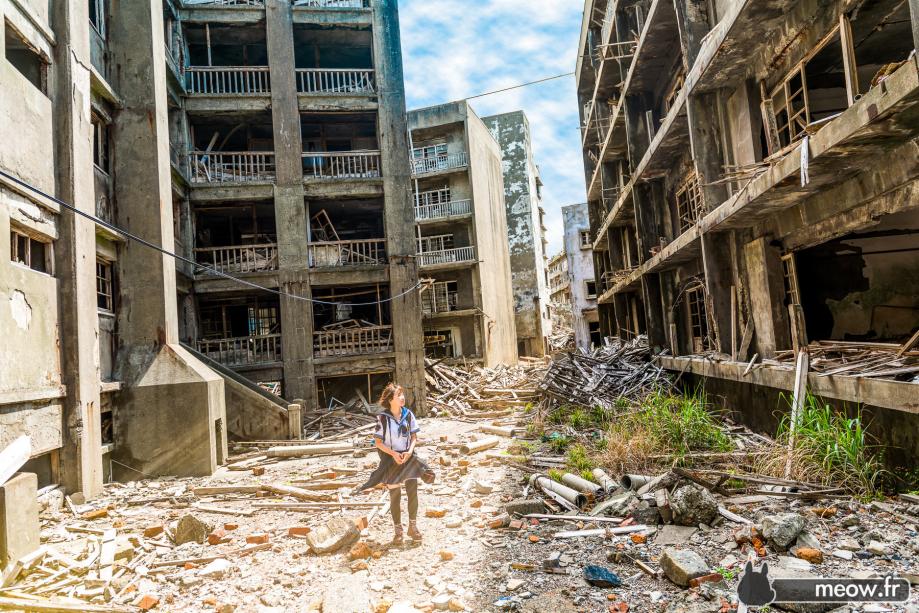This Abandoned Island was Once the Most Densely Populated Place on Earth
Atlas Obscura on Slate is a new travel blog. Like us on Facebook, Tumblr, or follow us on Twitter @atlasobscura
Hashima Island, 11 miles off the coast of Nagasaki, is known by two nicknames: "Gunkanjima" (Battleship Island) and "Midori nashi shima" (island without green). The austere brutality conjured by these names is reflected in its appearance -- Gunkanjima is a narrow lump of rock covered in the crumbling remains of a crowded concrete village.
Mitsubishi purchased the island in 1890 to establish a facility for mining undersea coal reserves. In 1916, the first concrete high-rises sprung up on Gunkanjima -- nine-story slabs of gray with cramped rooms and rows of identical balconies overlooking a claustrophobic courtyard. By 1959, over 5,000 coal miners and their families occupied these drab apartments, making the island -- the size of 12 football fields -- the most densely populated place on Earth.
Residents relied on the mainland for deliveries of food and, until 1957, water, but Gunkanjima was otherwise self-sufficient. Schools, playgrounds, cinemas, shops, a hospital, and even brothels operated in the tiny community. There were no motor vehicles or elevators -- steep concrete staircases that connected adjoining buildings were the only means of travel to ninth-floor apartments.
During the 1960s, Japan gradually switched from coal to petroleum for its fuel needs. As a result, coal mines across the country closed. Gunkanjima was no exception. In January 1974, Mitsubishi held a ceremony in the gymnasium to officially close its mining facility. With no reason to live on the island anymore, all residents abandoned their homes for the mainland within two months. Gunkanjima has been uninhabited ever since.
Decades of typhoons, wind, rain, and seawater have caused massive degradation to the monolithic buildings. Wooden planks regularly fall from the disintegrating balcony railings, landing on the piles of crumbled concrete below. Contorted steel beams and rusted iron frames protrude from the walls. Hints of domesticity remain: a teacup; a tricycle; a television manufactured in the 1960s. The only sounds on what was once the world's most crowded place are the whipping wind and crashing waves.
More photos of Gunkanjima Island can be seen on Atlas Obscura
Abandoned islands:
- No Man's Land was a Victorian sea fort, then a deluxe hotel, and is now an abandoned wasteland
- Ross Island, an abandoned settlement originally established by British colonialists in the Andaman archipelago.
- The Great Isaac Cay, a deserted lighthouse in the Bermuda triangle, is supposedly the site of mysterious disappearances


